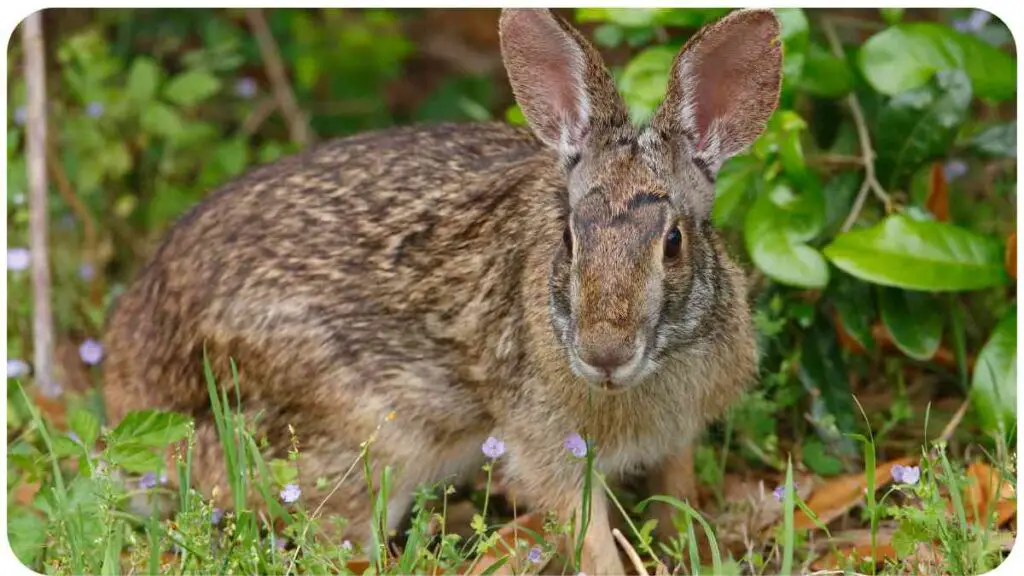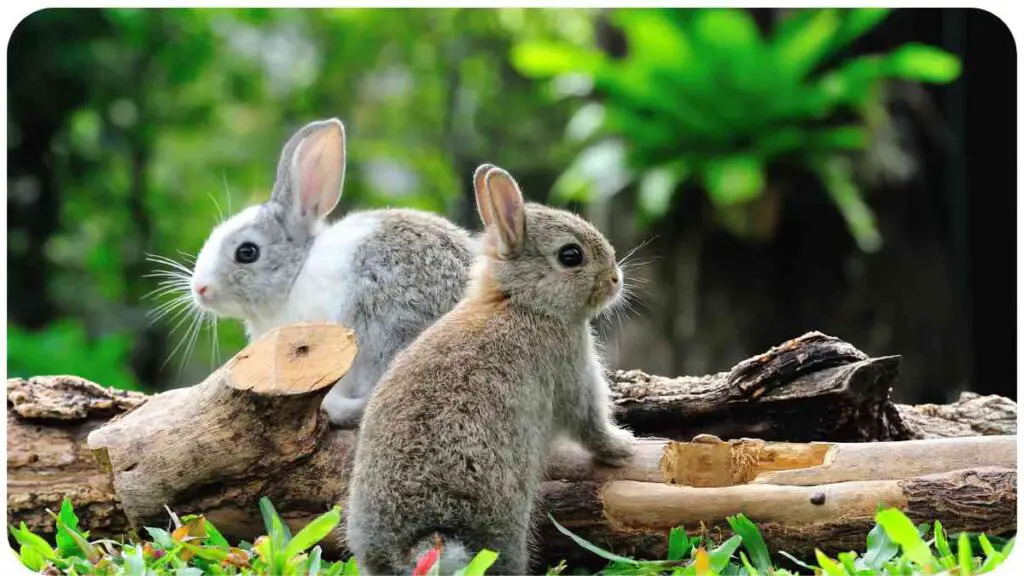As a responsible rabbit owner, providing your furry friend with a harness is essential for safe outdoor adventures. However, improper sizing can lead to discomfort, irritation, and even injury. In this guide, we’ll delve into the nuances of harness chafing and provide insights on selecting the right size harness for your rabbit.
| Takeaways |
|---|
| 1. Proper sizing is crucial to prevent harness chafing and ensure your rabbit’s comfort during outdoor adventures. |
| 2. Soft, breathable materials like nylon or mesh can help minimize friction and irritation against your rabbit’s skin. |
| 3. Regularly inspect the harness for signs of wear and tear and replace it as needed to prevent chafing and discomfort. |
| 4. Follow proper fitting techniques and adjust straps to ensure a snug but comfortable fit for your rabbit. |
| 5. Monitor your rabbit’s behavior while wearing the harness and make adjustments accordingly to ensure their safety and well-being. |
2. Understanding Harness Chafing

Harness chafing occurs when the harness rubs against the rabbit’s skin, causing friction and irritation. This discomfort can result in skin abrasions, hair loss, and even open wounds if left unaddressed. Choosing the correct size harness is paramount in preventing this issue.
Ensuring your rabbit’s safety involves more than just adjusting the harness size. Proper fit guarantees comfort and security during outdoor excursions, minimizing the risk of escapes or injuries.
Table: Common Symptoms of Harness Chafing
| Symptom | Description |
|---|---|
| Skin Redness | Irritation and inflammation of the skin. |
| Hair Loss | Bald patches due to constant rubbing. |
| Open Wounds | Severe chafing leading to skin abrasions. |
| Discomfort | Signs of distress or agitation in the rabbit. |
3. Importance of Selecting the Right Size
Selecting the right size harness not only ensures your rabbit’s comfort but also enhances safety during outdoor excursions. A well-fitted harness allows your rabbit to move freely while preventing chafing and potential escape.
Table: Benefits of Properly Sized Harnesses
| Benefit | Description |
|---|---|
| Comfort | Minimizes discomfort and irritation for the rabbit. |
| Safety | Prevents escape and ensures control during walks. |
| Skin Health | Reduces the risk of skin abrasions and injuries. |
| Mobility | Allows freedom of movement without restrictions. |
4. Factors to Consider
When selecting a harness for your rabbit, several factors should be taken into account to ensure optimal fit and comfort.
Maintaining hygiene in your rabbit’s habitat is crucial, including cleaning their hay feeder. Regular cleaning not only ensures freshness but also prevents potential health hazards, promoting your pet’s overall well-being.
Material
The material of the harness plays a crucial role in preventing chafing. Opt for soft, lightweight materials such as nylon or mesh that won’t irritate your rabbit’s skin.
Fit
A harness should fit snugly but not too tightly. Ensure there’s enough room for your rabbit to breathe and move comfortably without any restrictions.
Adjustability
Look for harnesses with adjustable straps to customize the fit according to your rabbit’s size and shape. This feature allows for flexibility as your rabbit grows or if adjustments are needed.
5. Measuring Your Rabbit
Before purchasing a harness, it’s essential to accurately measure your rabbit to determine the correct size.
Before feeding your furry friend, consider the dietary implications. Learn about the safety of feeding ham to dogs to avoid potential health risks and make informed choices regarding your pet’s nutrition and health.
Neck Size
Measure around the base of your rabbit’s neck where the collar would sit. Ensure the tape measure is snug but not tight, and record the measurement in inches or centimeters.
Chest Size
Wrap the tape measure around the widest part of your rabbit’s chest, just behind the front legs. Again, ensure a snug fit without constricting your rabbit’s movement.
Girth Measurement
Measure the girth of your rabbit’s body by wrapping the tape measure around the widest part of the ribcage, just behind the front legs. This measurement will help determine the proper size harness.
6. Choosing the Right Size Harness
Once you have accurate measurements of your rabbit, you can use them to select the appropriate size harness. Most harnesses come with sizing guides provided by the manufacturer, indicating which size corresponds to specific measurements.
It’s essential to refer to these sizing guides rather than assuming your rabbit’s size based on breed or age alone. Remember that each rabbit is unique, and a harness that fits one rabbit perfectly may be too tight or too loose for another.
Facing connectivity issues with your Furbo Dog Camera? Explore troubleshooting tips and solutions to ensure seamless operation and uninterrupted monitoring of your beloved canine companion, enhancing your peace of mind.
7. Popular Harness Sizes for Rabbits

Harness sizes for rabbits typically range from extra small to large, with variations in measurements depending on the brand. Below are some common harness sizes and their corresponding measurements:
Table: Popular Harness Sizes and Measurements
| Size | Neck Circumference (inches) | Chest Circumference (inches) | Girth Measurement (inches) |
|---|---|---|---|
| Extra Small | 6-8 | 8-10 | 10-12 |
| Small | 8-10 | 10-12 | 12-14 |
| Medium | 10-12 | 12-14 | 14-16 |
| Large | 12-14 | 14-16 | 16-18 |
Referencing these measurements alongside your rabbit’s own measurements will help you determine the most suitable harness size.
8. Tips for Preventing Chafing
To prevent harness chafing and ensure your rabbit’s comfort during outdoor adventures, consider implementing the following tips:
- Choose the Right Material: Opt for harnesses made from soft, breathable materials like nylon or mesh to minimize friction against your rabbit’s skin.
- Inspect Regularly: Regularly inspect the harness for signs of wear and tear, such as frayed edges or weakened straps. Replace the harness if any damage is detected to prevent chafing.
- Proper Fitting: Ensure the harness fits snugly but not too tightly. Adjust the straps according to your rabbit’s measurements and check for any areas where the harness may be rubbing against the skin.
- Padding: Consider adding padding to areas where the harness comes into contact with your rabbit’s body, such as the chest and belly. Soft padding can help reduce friction and prevent chafing.
- Monitor Behavior: Pay attention to your rabbit’s behavior while wearing the harness. If you notice signs of discomfort or agitation, such as excessive scratching or trying to remove the harness, it may indicate chafing or an improper fit.
9. Proper Harness Fitting Techniques
Properly fitting a harness is crucial in preventing chafing and ensuring your rabbit’s safety and comfort. Follow these steps for a proper harness fitting:
- Loosen Straps: Start by loosening all straps on the harness to their maximum length.
- Position Harness: Place the harness over your rabbit’s head and position it on their body, with the chest strap between the front legs and the back strap along the spine.
- Adjust Neck Strap: Adjust the neck strap to fit snugly around the base of your rabbit’s neck, ensuring it’s not too tight or too loose.
- Adjust Chest Strap: Next, adjust the chest strap to fit comfortably behind the front legs, allowing enough room for movement without rubbing against the skin.
- Secure Straps: Once the harness is properly adjusted, secure all straps to ensure they stay in place during walks or outdoor activities.
When selecting chew toys for your dog, prioritize safety. Understand what makes a chew toy durable and safe to prevent choking hazards or ingestion of harmful materials, promoting your pet’s oral health and overall safety.
By following these fitting techniques and regularly monitoring your rabbit’s comfort, you can help prevent harness chafing and ensure a pleasant experience for both you and your furry companion.
10. Frequently Asked Questions (FAQs)
Here are some common questions regarding harness selection and preventing chafing in rabbits:
Q: How do I know if the harness is too tight?
A: If the harness is too tight, you may notice your rabbit exhibiting signs of discomfort, such as trying to escape from the harness, reluctance to move, or skin irritation around the harness area. It’s essential to regularly check the fit and adjust accordingly to ensure your rabbit’s comfort.
Q: Can I use a harness designed for another animal on my rabbit?
A: It’s not recommended to use a harness designed for another animal on your rabbit, as they have different body shapes and sizes. Harnesses specifically designed for rabbits are tailored to their unique anatomy and are less likely to cause discomfort or chafing.
Q: My rabbit keeps chewing on the harness. What should I do?
A: Chewing on the harness can be a sign of discomfort or stress. Ensure the harness fits properly and isn’t causing any irritation. You can also try distracting your rabbit with toys or treats to redirect their attention away from the harness.
Q: How often should I replace my rabbit’s harness?
A: It’s recommended to inspect your rabbit’s harness regularly for signs of wear and tear and replace it as needed. Depending on usage and the quality of the harness, this may range from several months to a year.
11. Conclusion
Selecting the right size harness for your rabbit is essential for their comfort, safety, and overall well-being during outdoor adventures. By understanding harness chafing and following proper fitting techniques, you can ensure a pleasant experience for both you and your furry friend.
Remember to prioritize comfort, choose high-quality materials, and regularly monitor your rabbit’s behavior while wearing the harness. With the right approach, you can enjoy many happy and safe outings together.
Further Reading
Here are some additional resources for further reading on rabbit harnesses:
- Pet Forums: Harness Model Recommendations
- Engage in discussions and get recommendations on the best harness models for your rabbit.
- Pets Radar: Best Rabbit Harness Buying Guide
- Explore a comprehensive buying guide featuring top-rated rabbit harnesses and expert recommendations.
- A-Z Animals: Rabbit Harness Reviews
- Read detailed reviews and comparisons of various rabbit harness models to make an informed decision.
FAQs
Here are some frequently asked questions about selecting and using rabbit harnesses:
How do I choose the right size harness for my rabbit?
Selecting the right size harness involves measuring your rabbit’s neck, chest, and girth and referring to the manufacturer’s sizing guide for a proper fit.
Can I use a dog or cat harness for my rabbit?
It’s not recommended to use harnesses designed for other animals, as they may not fit properly and could cause discomfort or injury to your rabbit.
How do I prevent my rabbit from chewing on the harness?
Try distracting your rabbit with toys or treats, ensure the harness fits properly to minimize discomfort, and supervise your rabbit closely during outdoor activities.
How often should I replace my rabbit’s harness?
Regularly inspect the harness for signs of wear and tear, and replace it as needed to ensure your rabbit’s safety and comfort during walks or outings.
What should I do if my rabbit shows signs of discomfort while wearing the harness?
If your rabbit shows signs of discomfort, such as trying to escape from the harness or exhibiting skin irritation, adjust the fit or consider trying a different harness style to ensure their comfort.

I’m Dr. Hellen James, a professional veterinarian with a deep interest in the ways that litter size affects the health of animals. I’ve spent years studying this subject and performing research on reproduction in many different kinds of creatures.


